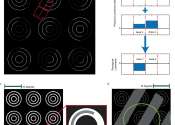An illusion is a distortion of the senses, revealing how the brain normally organizes and interprets sensory stimulation. While illusions distort reality, they are generally shared by most people. Illusions may occur with more of the human senses than vision, but visual illusions, optical illusions, are the most well known and understood. The emphasis on visual illusions occurs because vision often dominates the other senses. For example, individuals watching a ventriloquist will perceive the voice is coming from the dummy since they are able to see the dummy mouth the words. Some illusions are based on general assumptions the brain makes during perception. These assumptions are made using organizational principles, like Gestalt, an individual's ability of depth perception and motion perception, and perceptual constancy. Other illusions occur because of biological sensory structures within the human body or conditions outside of the body within one’s physical environment.
The term illusion refers to a specific form of sensory distortion. Unlike a hallucination, which is a distortion in the absence of a stimulus, an illusion describes a misinterpretation of a true sensation. For example, hearing voices regardless of the environment would be a hallucination, whereas hearing voices in the sound of running water (or other auditory source) would be an illusion.
Mimes are known for a repertoire of illusions that are created by physical means. The mime artist creates an illusion of acting upon or being acted upon by an unseen object. These illusions exploit the audience's assumptions about the physical world. Well known examples include "walls", "climbing stairs", "leaning", "descending ladders", "pulling and pushing" etc.









